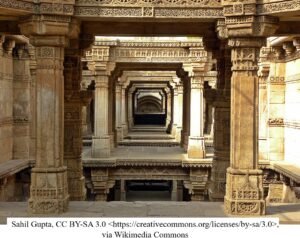Shankaracharya was a prodigious child, believed to be a partial avatar of Bhagwan Shiva, who descended to spread the teachings of ancient Hindu spiritual texts across Bharat Varsha. He was born in 788 CE in the small town of Kalady in Kerala, to his pious and devout parents, Shivaguru and Aryamba. They named him Shankara, meaning “Giver of Prosperity.”
From an early age, Shankara was drawn to sannyasa (monkhood), but his mother initially did not approve. One day, at the age of eight, while at the river with his mother, a crocodile suddenly caught his foot. Shankara told his mother, “If you allow me to take sannyasa, the crocodile will release me.” Reluctantly, she consented, and as he had said, his foot was freed. Shankara formally became a sannyasi at the age of twelve.
Remarkably gifted, Shankara was fluent in Sanskrit by the age of two, could recite the Vedas by four, and had mastered all major spiritual texts by age sixteen. His life was brief yet impactful; he passed away at the age of thirty-two, in 820 CE, in Kedarnath, now in Uttarakhand.
In a short span of thirty-two years Shankara accomplished enormously for Bharat Varsha and Sanatan Dharma. He studied Vedas, Upanishads, and Brahma sutra and Gaudapada Karika from his guru Govind Bhagvadpada. Later he wrote commentaries on Brahma sutras, ten Upanishads and Bhagvad Gita. He composed Dakshinamurti Stotra, Vivek Chudamani, Aparoksh Anubhuti, Atmabodh, Tattvabodh, Nirvana Shatakam, Bhahjgovindam and many more. He is known as Adi-guru. He traveled throughout India to establish four major monastic centers, or matha (also called mutts), in different regions of India to promote and preserve the teachings of Veda/Vedanta. These matha are as follows: Kalika Mutt at Dwaraka, Gujarat (West); Sharada Mutt at Sringeri, Karnataka (South); Govardhan Mutt at Puri, Odisha (East); Jyotir Mutt near Badrinath, Himalaya (North). Even today these centers stand as symbols of Hindu identity and Hindu unity. The heads of Mathas are our primary Dharma gurus.
When he learned that his mother was taking her last breath, Shankaracharya walked thousands of miles back to be with her at the dying bed.
In a short span of his life, he re-established the Vedic Dharma and advocated Advaita Vedanta and restored it to its pristine glory.
In the words of Swami Vivekanand, “In Shankaracharya, we saw tremendous intellectual power throwing the scorching light of reason in everything.”
— Sanjay Mehta


